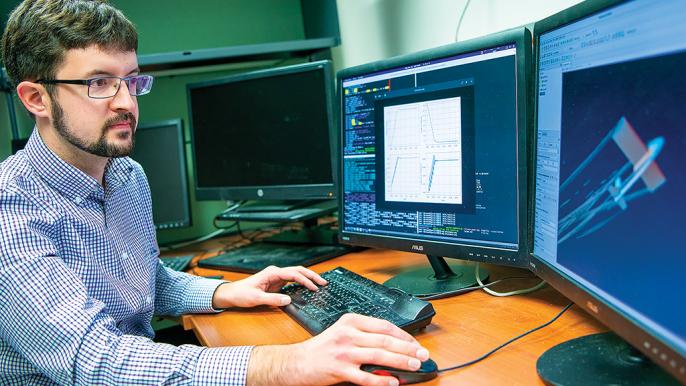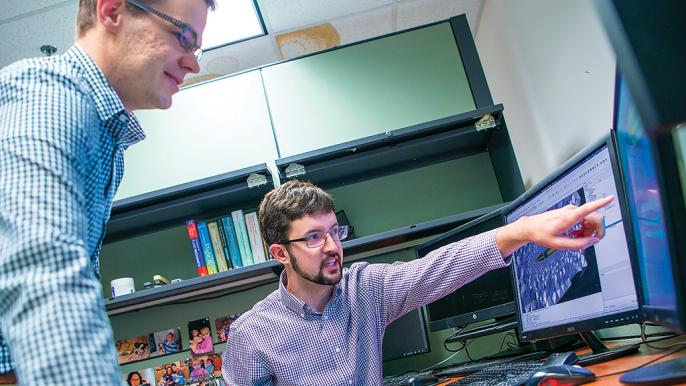
Daniel Prosser, one of Aviation Week’s 20 Twenties in 2013, provides program support at the Naval Air Warfare Center Aircraft Division, testing aircraft and systems being acquired for the U.S. Navy.
Dan Prosser found that what he liked and what he was good at were one and the same—computer programming and simulations—while an undergraduate student at Rochester Institute of Technology. He took that interest to the Georgia Institute of Technology to earn a Ph.D. in aerospace engineering. His work in grad school is where he found his future, evaluating and analyzing simulations. “I like being on the cutting edge of the tools the Navy is working on—the aircraft and everything that goes on it,” Prosser says. “I like the stability of working for the government. We have good benefits and vacation time. My work situation is good, and I have every other Friday off, and while salary [as a priority] comes after the life I wanted for my family, we are paid well.”

Operating in the Mesh
As naval aircraft grow increasingly complex, Prosser is involved with mesh generation. In this technique, a large area surrounding an aircraft in simulation is broken into small cells, with equations in each cell solved and then aggregated to identify how fluid dynamics form around the vehicle. Some mesh generations take months to run, and automation in software development is helping to make the operation more efficient. Prosser works with fellow aerospace engineer Jacob Allen (below) on the mesh-generation techniques being used.

Developing and Providing Tools
Prosser’s daily work involves assuring that tools being used to assess new aircraft and systems are doing their jobs, from computation simulations of fluid dynamics to basic quality assurance for the High-Performance Computing Modernization Program (HPCMP). He checks the varied simulations as they are running and how the data is coming in, and then he analyzes that data. The HPCMP provides the tools used in evaluating systems being acquired, including computational research and engineering acquisition tools and environment.

Teaching the Tools
In addition to assuring the quality of the simulation and evaluation tools, Presser’s division assigns engineers to teach courses three times a year at varied locations to help users gain expertise. The tools, which assist programmers as they code software, come with use cases that allow the students to play with new features while allowing Prosser to contribute to how the code is developed.
